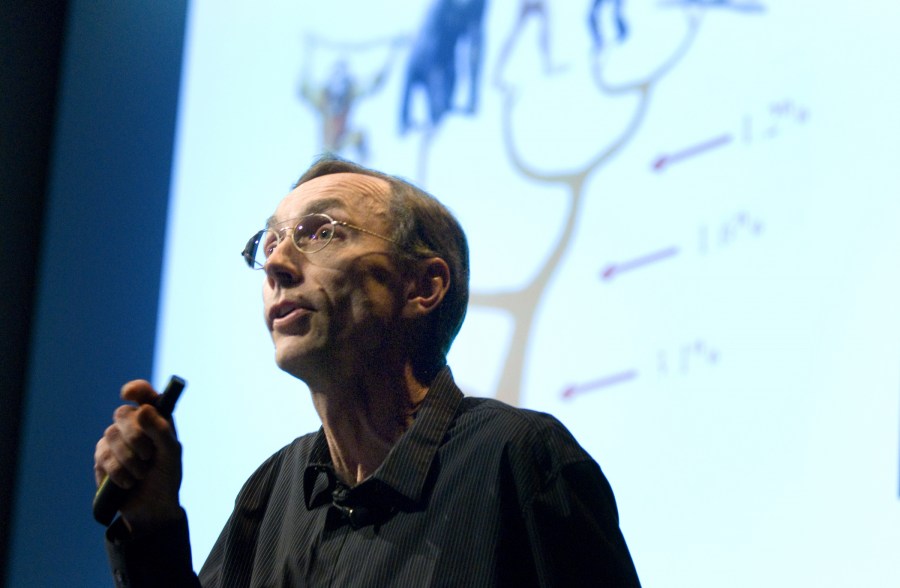
Discovery Lecturer Svante Pääbo, Ph.D., speaks about his new studies of the genome of Neanderthals. (photo by Susan Urmy)
Discovery Lecturer decodes humans’ closest kin
On Thursday, May 6, a set of papers revealing the first draft of the genome of our closest evolutionary relatives — Neanderthals — was published in the journal Science.
And attendees of the May 6 Discovery Lecture were among the first to hear about the findings directly from the lead researcher, Svante Pääbo, Ph.D.
At the semester's final Discovery Lecture, Pääbo, director of the Max Planck Institute for Evolutionary Anthropology in Leipzig, Germany, detailed the painstaking work that led up to this noteworthy achievement — and the potential insights the findings may hold for what makes humans human.
While comparing the human genome to the genomes of other living species has revealed much about our evolutionary past, it is a very indirect way of reconstructing our history, Pääbo noted.
“The dream is to go back in time and study ancestral genomes or genomes of close extinct relatives,” he said. “To do that we would need a Neanderthal genome. Until five or six years ago, I would've said that would be impossible to do.”
But recent advances in high-throughput sequencing allowed Pääbo and colleagues to realize that dream.
Using DNA isolated from 40,000-year-old bones of three female Neanderthals, Pääbo and his team were able to reconstruct about 60 percent of the Neanderthal genome.
The investigators then compared the Neanderthal genome to the genomes of five living humans: one San (from southern African), one Yoruba (from West Africa), one Papua New Guinean, one Han Chinese and one French person.
The work suggests that:
• 1 percent to 4 percent of the genome of people outside Africa derives from Neanderthals.
• The Neanderthal genome is more similar to the genomes of the French, Chinese and Papuan individuals than to the two African individuals.
• Neanderthals likely mated with early modern humans shortly after leaving Africa, but this interbreeding was probably limited.
Pääbo and colleagues also used the genomic information to begin to assemble a catalog of genetic features that exist in all humans today but are not found in Neanderthals or apes.
Although much work remains, Pääbo says that this catalog will be valuable in helping scientists study the genetic features that set humans apart from other organisms.
For a complete schedule of the Discovery Lecture series and archived video of previous lectures, go to www.mc.vanderbilt.edu/discoveryseries.













